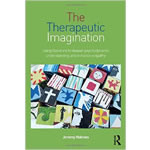
 Holmes, J. (2014). The Therapeutic Imagination: Using Literature to Deepen Psychodynamic Understanding and Enhance Empathy.
Holmes, J. (2014). The Therapeutic Imagination: Using Literature to Deepen Psychodynamic Understanding and Enhance Empathy.
Reviewed by: Michael Fiorini, New York University
If one were to summarize the perspective extolled within The Therapeutic Imagination, it would inarguably be that imagination is the key to effective psychotherapy. Imagination, here, is of the sort that is applied to empathetic definition, understanding, and potential conception of the thoughts and feelings of others. The book further explores the idea that those well versed in different forms of literature are resultantly gifted with a broad emotional and psychological framework they can use to understand the existential experiences of clients. Taking these principles into constant consideration, different forms of literature and select authors are looked at and explained as illustrative of certain central principles in therapy and psychological expression. Functioning as a sort of expansive thought experiment, the book attempts to define the necessary and essential aspects of therapy and explain them through literature. Concurrently, it argues that the ability to perceive fully the psychological and emotional ramifications of certain mental illnesses and therapy, one needs to be aware of outside conceptions. Throughout, the book points to understanding the thoughts and feelings of authors and poets as an avenue furthering more empathic clinical work.
Well-sourced and highly cognizant of the historical and contemporary foundations of psychiatry and psychotherapy, The Therapeutic Imagination is as much a theoretical work in its own right as it is a consolidation of what is already known about the therapeutic process. It can then be seen as a guide trying to reframe existing knowledge through relating necessary factors in therapy work with emotional and existential narratives derived from poetry and fiction. The process for explanation the book uses is broken into three parts. The first concerns the imagination of therapists, the ability for them to understand and express their own thoughts and feelings internally. The second is concerned with narrative style and how it plays a role in conveying the transformational and storytelling aspects of psychotherapy. The third part heavily draws upon literary accounts as illustrations of numerous psychiatric conditions. With the use of poetic examples, the final part shows the failure of psychiatry to serve its patients without the incorporation of psychodynamic creativity and imagination.
The Therapeutic Imagination, as a result of its focusing on multifaceted internal and intangible aspects of the psychotherapeutic process, might best serve as supplemental reading for individuals first learning how to conduct effective therapy. There is a definite slant towards student readers here, although the book by no means limits itself to that audience narratively or in attention to detail. Professional readership will also find the book useful for its captivation of the parts of therapy inexpressible outside of the artistic viewpoint. In exploring the imaginative capacity needed for the therapist to deepen their understanding and work with clients, those therapists experiencing difficulty in their work might find new meaning behind it. Because it sometimes reads like a textbook (speaking the author’s background in writing textbooks for psychotherapy), there is an intermittent dryness to some parts of this narrative, however this can be forgiven as these parts add greater theoretical and scientific background to the author’s discussion. While the certainty with which some of the concepts are discussed might be off-putting for those not already artistically inclined, the book nonetheless brings forth a wealth of interesting ideas that many will find highly intellectually stimulating.
Jeremy Holmes has worked for 35 years as a consultant psychiatrist and medical psychotherapist in the National Health Service (NHS). Currently, he is a visiting professor at the University of Exeter in the United Kingdom, conducting lectures nationally and internationally. An avid writer, his most recent works include The Oxford Textbook of Psychotherapy, Storr’s The Art Of Psychotherapy, and Exploring In Insecurity: Towards an Attachment-Informed Psychoanalytic Psychotherapy.
Holmes, J. (2014). The Therapeutic Imagination: Using Literature to Deepen Psychodynamic Understanding and Enhance Empathy. New York, NY: Routledge.
ISBN: 978-0-415-81957-2.
Hardcover. 200 pages. Includes index and references.

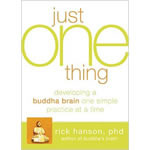

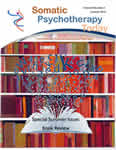

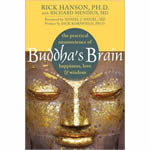

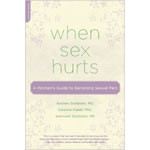

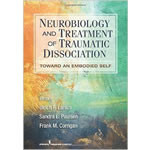

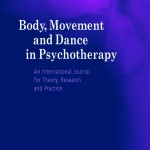


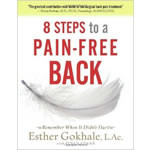





 Nevine Sultan, MA, LPC, NCC
Nevine Sultan, MA, LPC, NCC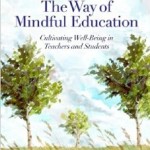
 Rechtschaffen, D. (2014). The Way of Mindful Education. New York, NY: W.W. Norton & Company, Inc. 318 pages. IBSN:978-0-393-7-895-0
Rechtschaffen, D. (2014). The Way of Mindful Education. New York, NY: W.W. Norton & Company, Inc. 318 pages. IBSN:978-0-393-7-895-0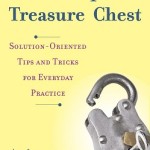
 Caby, A. & Caby, F. (2014). The therapist’s treasure chest: Solution-oriented tips and tricks for everyday practice. New York: W. W. Norton & Company. 345 pages. ISBN: 9780393708622
Caby, A. & Caby, F. (2014). The therapist’s treasure chest: Solution-oriented tips and tricks for everyday practice. New York: W. W. Norton & Company. 345 pages. ISBN: 9780393708622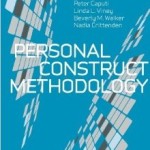
 Caputi, P., Viney, L., Walker, B., Crittenden, N. Personal Construct Methodology. Malaysia: Wiley-Blackwell. 348 pages. ISBN:9781119954163.
Caputi, P., Viney, L., Walker, B., Crittenden, N. Personal Construct Methodology. Malaysia: Wiley-Blackwell. 348 pages. ISBN:9781119954163.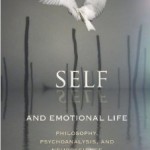
 Johnston, A. & Malabou, C. (2013). Self and Emotional Life: Philosophy, Psychoanalysis, and Neuroscience. New York, New York: Columbia University Press. 276 pages. ISBN: 9780231158312.
Johnston, A. & Malabou, C. (2013). Self and Emotional Life: Philosophy, Psychoanalysis, and Neuroscience. New York, New York: Columbia University Press. 276 pages. ISBN: 9780231158312.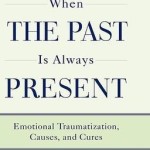
 Ruden, R.A. (2011) When the Past is Always Present. 132 New York, NY: Routledge. 132 pages. ISBN:978-0-415-87564-6
Ruden, R.A. (2011) When the Past is Always Present. 132 New York, NY: Routledge. 132 pages. ISBN:978-0-415-87564-6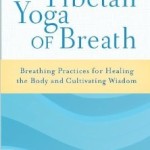
 Rinpoche, A. & Zangmo, A.C.(2013). The Tibetan Yoga of Breath.
Rinpoche, A. & Zangmo, A.C.(2013). The Tibetan Yoga of Breath.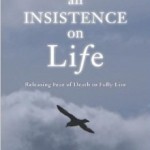
 Gignoux, J., 2013, An Insistence on life: Releasing fear of death to fully live, New York: FoulkeTale Publishing. 117 pages, 9781492745204
Gignoux, J., 2013, An Insistence on life: Releasing fear of death to fully live, New York: FoulkeTale Publishing. 117 pages, 9781492745204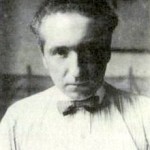
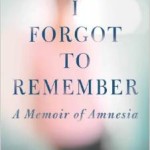
 Meck, Su & de Vise, Daniel. ( 2014) I Forgot to Remember: A Memoir of Amnesia. New York, NY: Simon & Schuster. 281 pages. ISBN: 9781451685817.
Meck, Su & de Vise, Daniel. ( 2014) I Forgot to Remember: A Memoir of Amnesia. New York, NY: Simon & Schuster. 281 pages. ISBN: 9781451685817.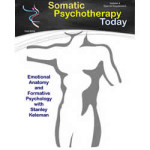
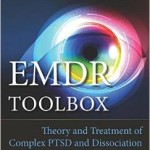
 Knipe, J. (2014). EMDR Toolbox: Theory and Treatment of Complex PTSD and Dissociation. New York, NY: Springer Publishing Company. ISBN: 9780826171269.
Knipe, J. (2014). EMDR Toolbox: Theory and Treatment of Complex PTSD and Dissociation. New York, NY: Springer Publishing Company. ISBN: 9780826171269.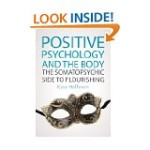
 Hefferon, Kate. (2013) Positive Psychology and The Body: The Somatopsychic Side to Flourishing. New York, NY: Open University Press. 254 pages. ISBN: 9780335247714.
Hefferon, Kate. (2013) Positive Psychology and The Body: The Somatopsychic Side to Flourishing. New York, NY: Open University Press. 254 pages. ISBN: 9780335247714.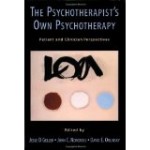
 Geller, J.D., Norcross, J.C., Orlinksy, D.E. (2005). The Psychotherapist’s Own Psychotherapy: Patient and Clinical Perspectives. New York, NY: Oxford University Press. 429 pages. ISBN:987-0-19-513394-3.
Geller, J.D., Norcross, J.C., Orlinksy, D.E. (2005). The Psychotherapist’s Own Psychotherapy: Patient and Clinical Perspectives. New York, NY: Oxford University Press. 429 pages. ISBN:987-0-19-513394-3.



 Kripalu is the largest yoga-based retreat center in North America. While you are here, enjoy daily yoga classes, natural-foods cuisine, massage and healing arts, hiking trails, sauna, like-minded people, and extraordinary views—all in the natural beauty of the Berkshires of western Massachusetts.
Kripalu is the largest yoga-based retreat center in North America. While you are here, enjoy daily yoga classes, natural-foods cuisine, massage and healing arts, hiking trails, sauna, like-minded people, and extraordinary views—all in the natural beauty of the Berkshires of western Massachusetts. 


 This is to let you know about the new conversation in the “Somatic Perspectives on Psychotherapy” series. This month, it is with Pierre Morin, about health, sickness and Process Work.
This is to let you know about the new conversation in the “Somatic Perspectives on Psychotherapy” series. This month, it is with Pierre Morin, about health, sickness and Process Work.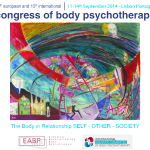


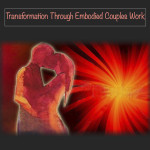
 The idea that partners in committed relationships elicit strong reactions in each other is self evident. That these passions are often overlooked in the therapy room is equally a reality. In this ground-breaking book, you will discover an innovative system for helping couples discover all of who they are.
The idea that partners in committed relationships elicit strong reactions in each other is self evident. That these passions are often overlooked in the therapy room is equally a reality. In this ground-breaking book, you will discover an innovative system for helping couples discover all of who they are.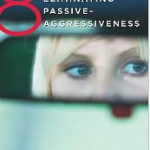
 Brandt, A. (2013). 8 Keys to Eliminating Passive-Aggressiveness. New York: W.W. Norton & Company, Inc. 184 pages. ISBN: 9780393708462
Brandt, A. (2013). 8 Keys to Eliminating Passive-Aggressiveness. New York: W.W. Norton & Company, Inc. 184 pages. ISBN: 9780393708462